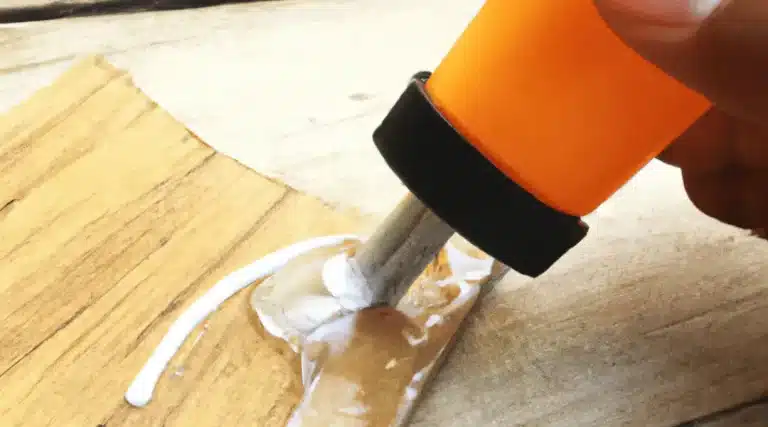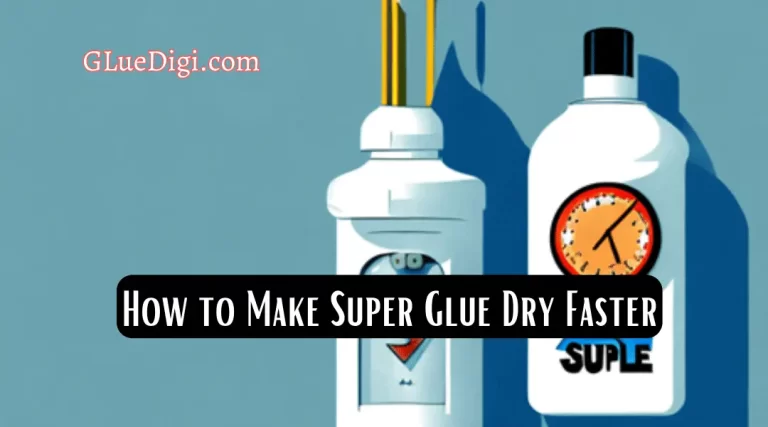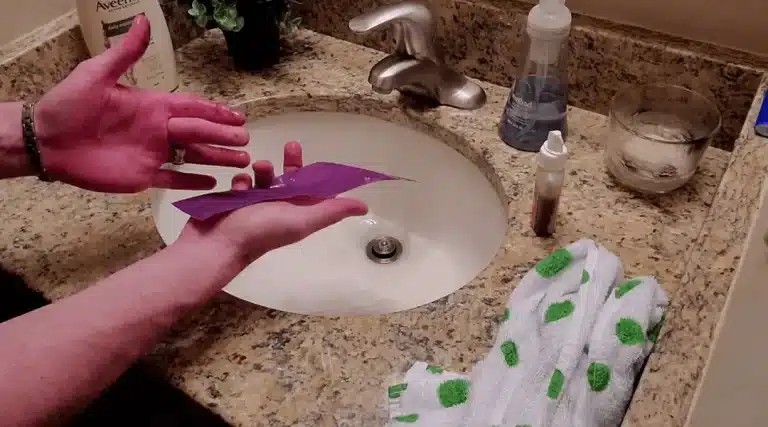Panel adhesive is a type of adhesive that is specifically designed for bonding panels together. It is a versatile adhesive that can bond a wide range of materials, including wood, metal, plastic, and glass. Panel adhesive is commonly used in the construction industry, as well as in woodworking and automotive applications.
In this article, we will explore what panel adhesive is, its uses, and the pros and cons of using it. We will also provide safety considerations and tips for using panel adhesive effectively. Whether you are a professional in the construction industry or a DIY enthusiast, understanding the benefits and limitations of panel adhesive can help you make informed decisions when it comes to choosing the right adhesive for your projects.
Understanding Panel Adhesive
The comprehension of the underlying principles of panel bonding is crucial to ensure the successful implementation of this innovative technology, which has revolutionized the way in which materials are joined together in various industrial applications.
Panel adhesive is a type of glue that is specifically designed to bond panels of different materials together.
The benefits of using panel adhesive are many, including its ability to provide a strong and long-lasting bond, as well as its ability to fill gaps and improve the overall appearance of the finished product.
However, in order to achieve these benefits, it is important to follow certain best practices when applying panel adhesive, such as ensuring that the surfaces to be bonded are clean and dry, and that the adhesive is applied evenly and at the correct temperature.
With these best practices in mind, panel adhesive can be an effective solution for a wide range of industrial applications.
Moving on to the uses of panel adhesive…
Uses of Panel Adhesive
An exploration of the diverse applications of panel adhesive reveals a range of possibilities for its deployment in construction, manufacturing, and assembly processes. Panel adhesive is available in various types and brands, each with unique properties and features that make them suitable for specific applications.
Some common applications of panel adhesive include bonding wood panels, laminates, plastics, and metals. It is also used in the construction of furniture, cabinets, and flooring, as well as in the automotive and aerospace industries. Furthermore, panel adhesive can be utilized for repairing cracks and gaps in walls and ceilings.
The versatility of panel adhesive makes it an essential component in various industries. With its ability to provide a strong and durable bond, it offers a cost-effective alternative to traditional bonding methods. As we delve into the pros of panel adhesive, it becomes apparent why it has become a popular choice for bonding materials.
Pros of Panel Adhesive
Exploring the advantages of utilizing panel adhesive reveals a multitude of benefits for various industries, demonstrating its versatility and cost-effectiveness as an alternative bonding method. Panel adhesive offers a strong and durable bond that can withstand extreme temperatures, vibrations, and impact, making it an ideal choice for automotive, aerospace, construction, and marine industries.
Additionally, panel adhesive provides a smooth and seamless finish, which eliminates the need for additional finishing work, reducing labor costs and time. Another benefit of panel adhesive is its ability to bond different materials, including metal, plastic, wood, and composites, making it a versatile solution for various applications.
Moreover, panel adhesive is easy to apply, requires minimal surface preparation, and can be used in both manual and automated applications, improving efficiency and productivity. Overall, the benefits of panel adhesive make it a preferred choice for many industries seeking a reliable and cost-effective bonding solution.
Moving on to the next section on the cons of panel adhesive, it is essential to consider its limitations and potential drawbacks.
Cons of Panel Adhesive
While panel adhesive has numerous benefits, it is vital to acknowledge its limitations and potential drawbacks, which can impede its efficacy and pose challenges for certain applications, akin to a double-edged sword.
One of the primary limitations of panel adhesive is that it may not be suitable for bonding certain materials, such as metals or plastics, due to their incompatibility with the adhesive.
Additionally, panel adhesive may require a longer drying time compared to other adhesives, which can be problematic for applications that require immediate strength and stability.
Furthermore, panel adhesive may not be as effective in extreme temperature conditions, such as high heat or freezing temperatures, which can compromise its durability and strength.
These limitations and drawbacks of panel adhesive must be taken into consideration when choosing an adhesive for specific applications, and alternative adhesives may be required for optimal results.
Moving into safety considerations, it is important to note that proper ventilation and protective gear, such as gloves and goggles, should be used when handling panel adhesive to avoid potential health hazards.
Safety Considerations
When working with panel adhesive, it is important to prioritize safety considerations to avoid any potential hazards.
Proper ventilation should be ensured to prevent the buildup of fumes and promote a safe working environment.
Protective gear, such as gloves and eye protection, should also be worn to prevent any accidental injuries.
Lastly, it is important to properly store and dispose of panel adhesive to prevent any potential harm to individuals or the environment.
By taking these precautions, the use of panel adhesive can be a safe and successful process.
Proper Ventilation
Ensuring adequate ventilation during the application of panel adhesive is crucial for both the health and safety of individuals and the effectiveness of the product. The importance of ventilation cannot be overstated as panel adhesive releases volatile organic compounds (VOCs) that can be harmful when inhaled.
Proper ventilation systems should be put in place to allow for the dissipation of these VOCs to avoid adverse health effects such as headaches, dizziness, and respiratory problems.
It is recommended that individuals wear protective gear such as respirators and gloves to minimize exposure to the adhesive and its fumes. In the subsequent section about protective gear, we will delve deeper into the importance of wearing appropriate protective gear during the application of panel adhesive.
Protective Gear
The use of appropriate protective gear is crucial during the application of panel adhesive to prevent exposure to harmful VOCs and ensure the safety and health of individuals involved in the process. Safety precautions should be observed to minimize the risks associated with handling panel adhesive, which include respiratory problems, skin irritation, and eye damage.
Equipment such as gloves, safety goggles, and respirators should be worn to protect against these hazards. Gloves help to prevent skin contact with the adhesive, while safety goggles protect the eyes from splashes or fumes. A respirator is essential to prevent inhalation of the harmful VOCs present in the adhesive. It is important to use the right type of respirator suitable for the adhesive used.
Proper ventilation in the work area is also necessary to reduce exposure to VOCs. Protective gear should be inspected before each use to ensure that they are in good condition and are functioning properly. After use, equipment should be washed thoroughly and stored correctly to maintain their effectiveness.
The next section will discuss the proper storage and disposal of panel adhesive.
Storage and Disposal
Now that you have learned about the importance of wearing protective gear when handling panel adhesive, it is crucial to also consider how to store and dispose of it properly.
Panel adhesive can be sensitive to temperature and humidity, so it is best to store it in a cool, dry place.
It is also important to keep it out of reach of children and pets.
When it comes to disposal, it is essential to follow local regulations and guidelines as it can have a significant impact on the environment.
Ensure that you are using the appropriate storage methods and disposing of the adhesive properly.
With these considerations in mind, you can use panel adhesive safely and efficiently.
In the next section, we will provide you with tips for using panel adhesive effectively.
Tips for Using Panel Adhesive
By employing the appropriate techniques when applying panel adhesive, users can ensure optimal results and avoid any potential mishaps.
One of the most important factors to consider is proper surface preparation. Before applying the adhesive, the surface should be cleaned thoroughly and free of any debris, dust, or oil. It is also important to ensure that the surface is dry and has no moisture, as this can affect the bonding process.
When applying the adhesive, users should follow the manufacturer’s guidelines for the amount to use and the recommended application method. It is recommended to apply the adhesive in a thin, even layer, using a notched trowel or roller, to ensure proper coverage. Additionally, it is important to apply the adhesive evenly and avoid any air pockets or voids, as this can affect the strength of the bond.
By following these tips, users can ensure that they achieve optimal results when working with panel adhesive.
Conclusion
Panel adhesive is a type of glue that is specifically designed to bond different types of panels together. The adhesive is commonly used in the construction industry to join wooden panels, drywall panels, and metal panels. Panel adhesive is known for its high bonding strength, making it a popular choice for various applications.
One interesting statistic about panel adhesive is that it has been found to be up to five times stronger than traditional wood glues. This means that it can provide a more durable and long-lasting bond between panels, which is particularly important in construction projects. Additionally, panel adhesive is resistant to water and moisture, making it ideal for outdoor applications and areas that are prone to moisture damage.
Despite its many benefits, panel adhesive does have some potential drawbacks. One of the main concerns with using panel adhesive is that it can be difficult to remove once it has been applied. This means that mistakes made during the application process can be difficult to correct. Additionally, panel adhesive can be more expensive than traditional wood glues, which may be a consideration for those on a tight budget.
When using panel adhesive, it is important to follow safety guidelines, such as wearing protective gloves and eyewear. Additionally, it is important to ensure that the surfaces being bonded are clean and free of debris, as this can affect the adhesive’s ability to bond properly.
Overall, panel adhesive is a versatile and effective bonding solution for a variety of applications, particularly in the construction industry where durability and strength are paramount.



